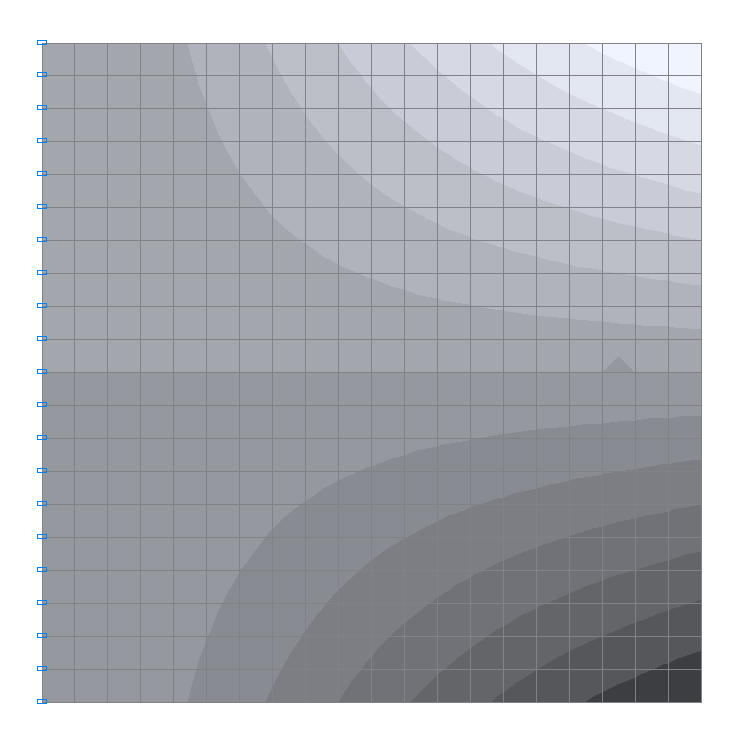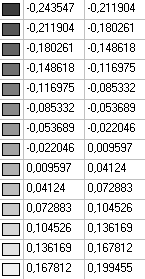Natural Oscillations of a Square Cantilever Plate
Objective: Modal analysis of a square cantilever plate.
Initial data file: 5.5.spr
Problem formulation: Determine the natural oscillation modes and frequencies ω of the square cantilever plate with the density of the material ρ.
References: I.A. Birger, Ya.G. Panovko, Strength, Stability, Vibrations, Handbook in three volumes, Volume 3, Moscow, Mechanical engineering, 1968, p. 382.
Initial data:
| E = 2.06·108 kPa | - elastic modulus; |
| ν = 0.3 | - Poisson’s ratio; |
| ρ = 7.85 t/m3 | - density of the material; |
| h = 0.01 m | - thickness of the plate; |
| a1 = 1.0 m | - long side of the plate (along the X axis of the global coordinate system); |
| a2 = 1.0 m | - short side of the plate (along the Y axis of the global coordinate system). |
Finite element model: Design model – grade beam / plate, 400 plate elements of type 20. The spacing of the finite element mesh along the sides of the plate (along the X, Y axes of the global coordinate system) is 0.05 m. Boundary conditions are provided by imposing constraints in the directions of the degrees of freedom Z, UX, UY for one of the edges parallel to the Y axis of the global coordinate system. The distributed mass is specified by transforming the static load from the self-weight of the plate ow = γ∙h, where γ = ρ∙g = 77.01 kN/m3. Number of nodes in the design model – 441. The determination of the natural oscillation modes and natural frequencies is performed by the Lanczos method. A consistent mass matrix is used in the calculation.
Results in SCAD


Design model



1-st natural oscillation mode



2-nd natural oscillation mode



3-rd natural oscillation mode



4-th natural oscillation mode



5-th natural oscillation mode
Comparison of solutions:
Natural frequencies ω, rad / s
|
Oscillation mode |
Nodal lines |
Theory |
SCAD |
Deviations, % |
|---|---|---|---|---|
|
1 |
|
54.2 |
53,8 |
0,71 |
|
2 |
|
132.5 |
131,9 |
0,43 |
|
3 |
|
332.4 |
330,0 |
0,72 |
|
4 |
|
425.7 |
421,8 |
0,91 |
|
5 |
|
483.2 |
480,3 |
0,61 |
Notes: In the analytical solution the natural frequencies ω of the square cantilever plate with the density of the material ρ can be determined according to the following formula obtained on the basis of the Rayleigh-Ritz method:
\[\omega =\frac{\omega_{m}^{\ast } }{a_{1}^{2}}\cdot \left( {\frac{D}{\rho \cdot h}} \right)^{\frac{1}{2}},\quad where \quad at: \quad\frac{a_{2} }{a_{1} }=1\quad: \] \[ \omega_{1}^{\ast } =3.494, \quad \omega_{2}^{\ast } =8.547, \quad \omega_{3}^{\ast } =21.44, \quad \omega_{2}^{\ast } =27.46, \quad \omega_{2}^{\ast } =31.17, \quad D=\frac{E\cdot h^{3}}{12\cdot \left( {1-\nu^{2}} \right)} \]





